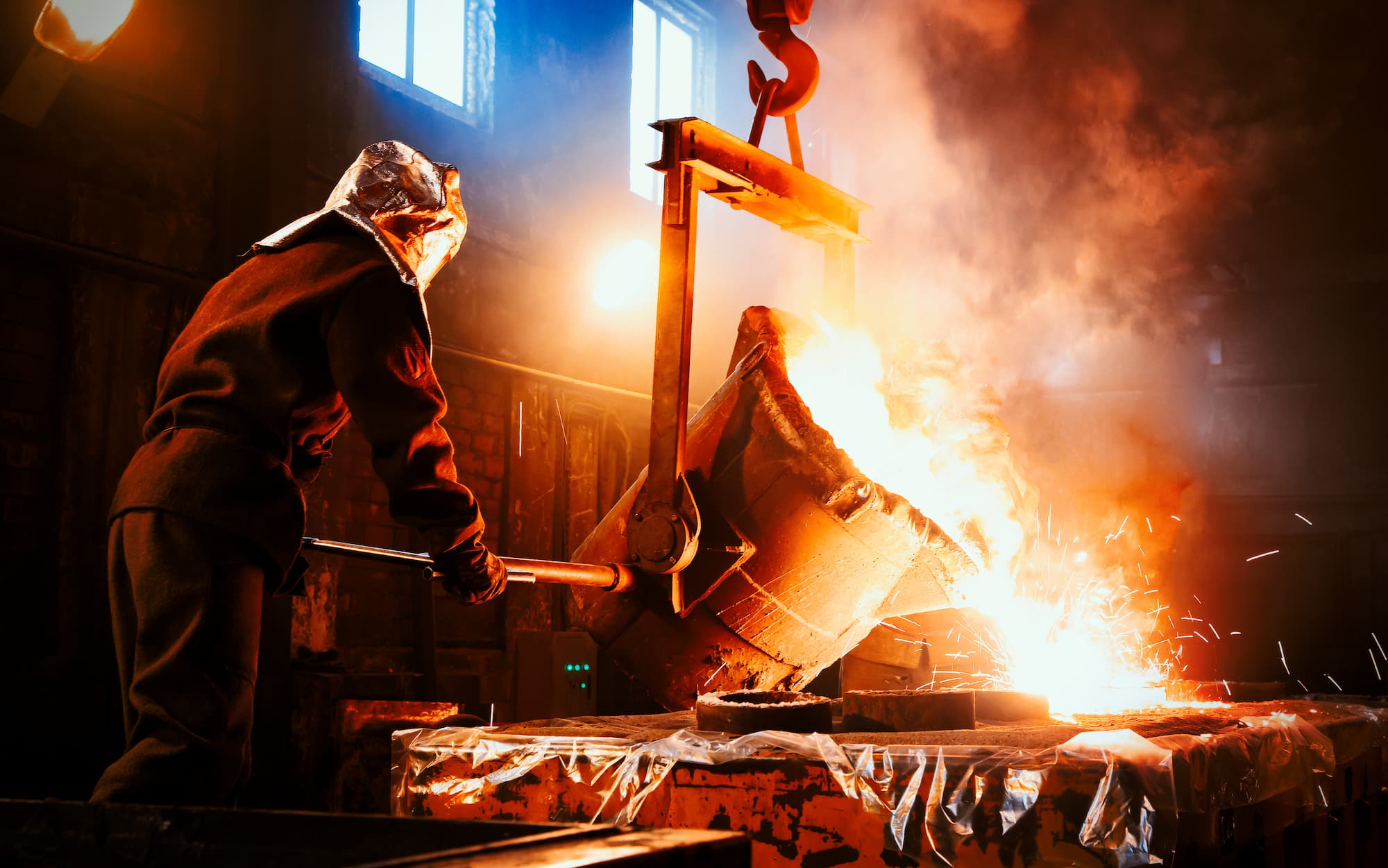When evaluating the efficiency of cast molding processes, it's common for engineering leaders and other stakeholders to focus on measurable outputs like profit. However, this fails to account for how current operations compare to the maximum possible production level if all conditions were optimal.
Inefficiency is a measure of that deviation, and closing the gap involves addressing waste and identifying areas for improvement in multiple functional areas. This includes analyzing staffing, energy consumption, material waste, and maintenance practices with a critical eye.
High Cost
The high cost can indicate inefficiency and complacency depending on the source of the negative financial impact. If hourly wages are the issue, it’s time to investigate why workers are taking longer to produce less. If the cost of materials is high, then it could be a matter of unnecessary waste or failing to review suppliers’ baseline costs for raw materials periodically.
While elevated production costs don’t always indicate inefficiency, they should trigger a review. Implementing a robust system to track and identify financial trends empowers companies to pinpoint the source of rising costs as close to real-time as possible. If the underlying cause is external, such as disrupted supply chains of aluminum, facilities can recalibrate faster to accommodate market changes or prioritize different product lines.
Defects & Rework
Defects and rework are particularly challenging since many of these problems can result from preventable human errors. Although automating the cast molding process can drastically decrease the likelihood of pouring issues, misplacement of cores, or other high-impact mistakes, manufacturing will also have a human element.
Training can address knowledge gaps and teach workers the most efficient approaches. For example, a worker might not be aware that insufficient permeability and excessive moisture in sand molds can lead to scars and blisters in the final product. Individuals will get an understanding of their role in the metal-casting process and the ways they can help with efforts to reduce errors if they are educated and aware of best practices.
Delays & Time to Market
Manufacturers can often mitigate delays simply by organizing working areas more logically and establishing the proper sequence of tasks. This reduces downtime from retrieving tools, completing paperwork, or even walking in from a break area on an inefficient travel path. In many cases, consulting the actual people performing the work can yield valuable insights about making the production process faster and easier without compromising on quality.
If there are losses from workers using different techniques, then standardizing the cast molding process will ensure that everyone utilizes the most efficient casting methods. Over time, standardizing processes will create a more uniform production output, making evaluating metrics like throughput easier. If one employee is lagging behind others, there could be multiple causes, but the first step is to recognize that production has slowed in the first place.
A long time to market could indicate that several more minor issues are compounding. Following procedures and workflows will provide more data at each discrete step to identify when production goals aren't being met. This could lead to new opportunities to streamline the cast molding process by automating systems or hiring additional employees to support trailing metrics.
Material Waste & Energy Losses
Some material waste is expected from cast molding processes, depending on the type of mold and any machining requirements of the end product. If waste can’t be further reduced by upgrading equipment or changing production procedures, it can still be captured as a resource. Materials like wax can be reintroduced into the metal-casting process as expendable mold materials, and any metals that can’t be recycled can be sold as scrap.
Another critical sign of inefficiency is unnecessary energy consumption, especially while heating metals for casting. Even shaft melting furnaces, which harness the heat of exhaust gases to heat incoming raw metal, can become inefficient due to improper shaft fill, a poor air-fuel burner ratio, or degraded furnace seals.
Bottlenecks & Single-Point Vulnerabilities
Bottlenecks occur when a limitation on a single process or point in production causes the entire operation to slow. This could be an essential machine in the cast molding process or related to a secondary responsibility like sharing a single computer for administrative tasks. When these bottlenecks have the potential to bring production to a total halt in the event of failure, then they’re also single-point vulnerabilities.
It's also important to note that bottlenecks can occur with personnel due to a lack of overlapping expertise. Suppose a company only has one micro-TIG welder capable of repairing dies and molds. In that case, production could be at risk whenever that individual is not on the premises while operations are in progress.
Even if it's not possible to hire additional staff or purchase more equipment, these sources of inefficiency can be addressed by identifying alternatives such as securing temporary welding support from an external business or changing schedules to distribute the workload evenly for an essential piece of equipment.
Learn More About Cast Molding Processes
With cutting-edge simulation software, manufacturers and engineers can immediately address cast molding inefficiencies. The benchmark software by Transvalor Americas carries 3-D simulation software for different types of metal casting processes, including the industry's best technical support and problem-solving built into the casting software. Contact Transvalor USA to find out how casting simulation software can reduce your time to market.

